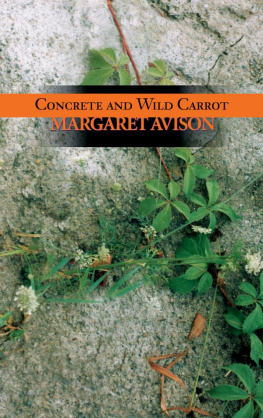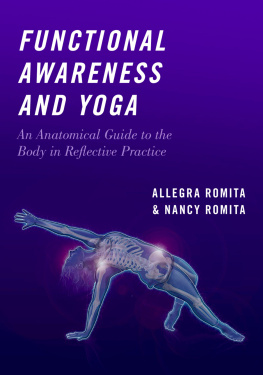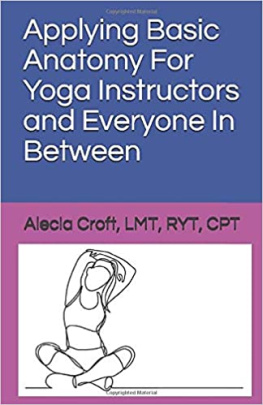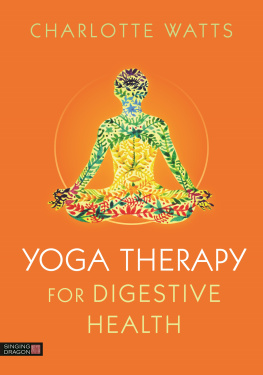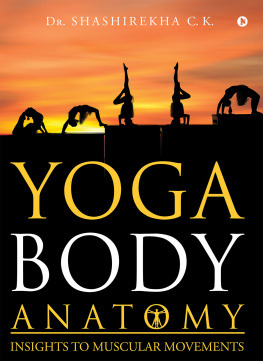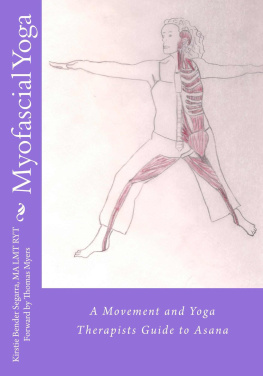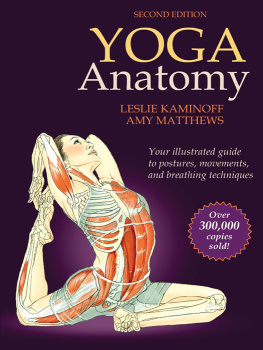YOGA
FASCIA, ANATOMY
and MOVEMENT
Joanne Avison
Yoga: E-RYT500, Structural Integration: KMI, CTK, CMED
Director: Art of Contemporary Yoga Ltd

HANDSPRING PUBLISHING LIMITED
The Old Manse, Fountainhall,
Pencaitland, East Lothian
EH34 5EY, Scotland
Tel: +44 1875 341 859
Website: www.handspringpublishing.com
First published 2015 in the United Kingdom by Handspring Publishing
Copyright Handspring Publishers 2015
Photographs and drawings copyright Joanne Avison unless otherwise indicated
All rights reserved. No parts of this publication may be reproduced or transmitted in any form or by any means, electronic or mechanical, including photocopying, recording, or any information storage and retrieval system, without either the prior written permission of the publisher or a license permitting restricted copying in the United Kingdom issued by the Copyright Licensing Agency Ltd, Saffron House, 6-10 Kirby Street, London EC1N 8TS.
The right of Joanne Avison to be identified as the Author of this text has been asserted in accordance with the Copyright, Designs and Patents Acts 1988.
ISBN 978-1-909141-01-8
eISBN 978-1-909141-40-7
British Library Cataloguing in Publication Data
A catalogue record for this book is available from the British Library
Library of Congress Cataloguing in Publication Data
A catalog record for this book is available from the Library of Congress
Notice
Neither the Publisher nor the Author assumes any responsibility for any loss or injury and/or damage to persons or property arising out of or relating to any use of the material contained in this book. It is the responsibility of the treating practitioner, relying on independent expertise and knowledge of the patient, to determine the best treatment and method of application for the patient.
Commissioning Editor Sarena Wolfaard
Design direction Sarah Russell; Bruce Hogarth, kinesis-creative
Cover design Victoria Dokas, Ariadne Creative
Artwork Joanne Avison (unless otherwise indicated)
Index by Dr Laurence Errington
Typeset by DiTech Process Solutions
Printed in the Czech Republic by Finidr Ltd.
The
Publishers
policy is to use
paper manufactured
from sustainable forests

Dedication
To my wonderful parents, Stephani and William; to Caroline in deepest gratitude; to Ben for the questions about science; and to Steven, without whom there would be no art.
Foreword
Yoga, along with martial arts and dance all of which stretch back into the mists of pre-history is certainly among the earliest organized attempts to change a person by means of body movement. Even though modern psychotherapy has largely abandoned a body-centred approach in favour of talk therapy and increasing amounts of pharmaceuticals, the positive effects of exercise on the psyche Juvenals mens sana in corpore sano have been acknowledged for centuries. Yoga, at least in the developed texts and adepts, goes well beyond these general benefits that come from engaging the mind in a coordinated pumping of the muscles. It claims (and in my experience, often delivers) to advance our psychophysiology into positive territory, away from self-centred, fear-based chemistry to a more serene, objective and fully present state of bodymind.
The modern flowering of yoga owes a great deal to the late B.K.S. Iyengar, a lion of a man who wrestled both the postures and the breathing practices of yoga into an understandable and graduated discipline. Even current forms of yoga that have rejected the particulars of his practice owe him a deep debt without him there would be no art of contemporary yoga. With him, and with the interest that has followed and branched out from his work, yoga has taken many forms, and over the course of my working life has gone from a few hippies contorting themselves in an ashram to the current ubiquity of yoga classes in nearly every gym, village hall, street corner, and even school athletic programmes, corporate retreats, and senior centres. Yoga itself has diversified into hundreds of branches, ranging from the athletic Ashtanga to the flowing Vinyasa to Iyengars precise positioning to more meditative approaches. These days, we are spoilt for choice in which yoga to choose for ourselves.
Inevitably, then, yoga comes up against science Prove it! say the researchers. Joanne Avison not a researcher in the laboratory sense, but rather a re-searcher is uniquely positioned to help us understand the research we have already, as well as provide a framework to understand the studies to come. Joannes background includes many years of teaching yoga in a variety of contexts, and with her quick mind and her ability to write clearly, this book provides the contemporary teacher and practitioner of yoga with a frankly astounding tour of current thinking that blends the spiritual with the scientific, and the sacred with the intensely practical.
Fascia that long-ignored biological fabric that shapes us has now become a buzzword, often used with more enthusiasm than understanding. This book takes on the developmental significance of what Dr Robert Schleip calls the neuromyofascial web in all its glory, without bogging the reader down in the details of anatomy or biochemistry, which are relevant to afascianado or biomechanist, but not necessary to daily practice.
The tradition of yoga has a great deal to teach us, but in another way these ancient texts and forms are entirely irrelevant. Industrialized, electronified humanity faces a challenge a whole series of challenges never before encountered by any previous era. One of these challenges is the loss of self-sense, a sense of alienation from the body and its whispered but essential messages, dulled in the roar of the planes, trains and automobiles, the blare of radio, TV and Internet, and the sheer weight of the number of people on this intricate planet. We must face the challenge of how we educate our children to move and feel in the natural world, and create a programme of what I have called Kinesthetic Literacy for this hyper, data-rich, information-poor era.
Read this book no matter what form of yoga you practice or teach in fact, read this book if you happen to have a body. You will be pulled along a merrily flowing stream of ancient and contemporary thought, and you will emerge with a fresh explanation of why the many new interpretations of yoga can be so important in the revivification of our body and mind.
Thomas Myers 2014
Preface
I began my yoga training aged seven, sitting beside my mother in a church hall in the mid-sixties, wondering why the man at the front was wearing white pyjamas.
Scintillate, scintillate global vivific
Fain would I fathom thy nature specific
Loftily poised in the ether capacious
Strongly resembling a gem carbonaceous
At sixteen I learned a form of meditation in a centre for the deaf in London and remained fascinated by sign language, by communicating with my hands. Meditation for me was like drinking water; something so much a part of my life that I could not understand why anyone would want to talk about it! After a broad and wonderful education in England and France (languages, sciences, fine art) and a career that included the artisan craft of the chocolatier and being a resident author for a large publishing house, a back injury in my early thirties re-introduced me to yoga and anatomy. Little did I imagine that understanding the various properties of chocolate (a substance that responds and changes structure with movement, manipulation, temperature and intention) would one day be the foundation for understanding the fascial matrix of the human body.
Next page

